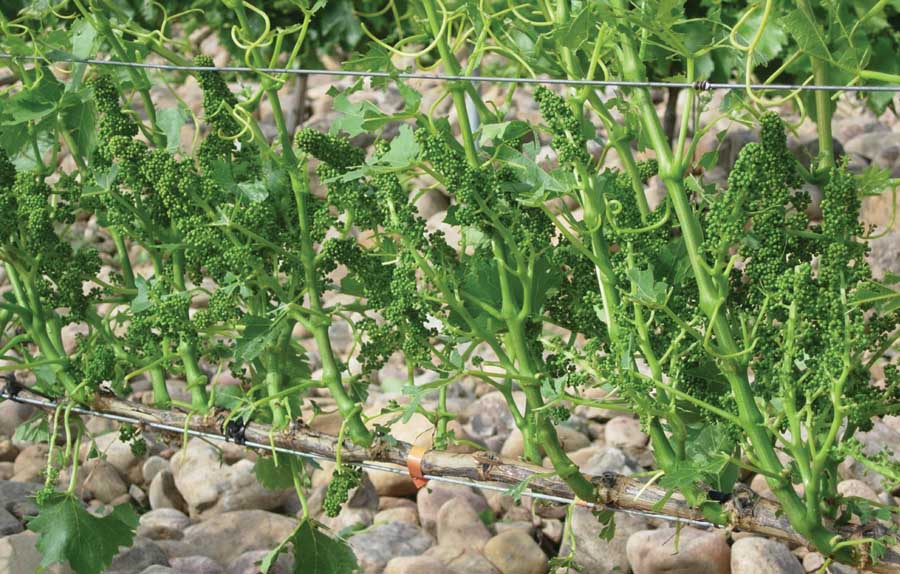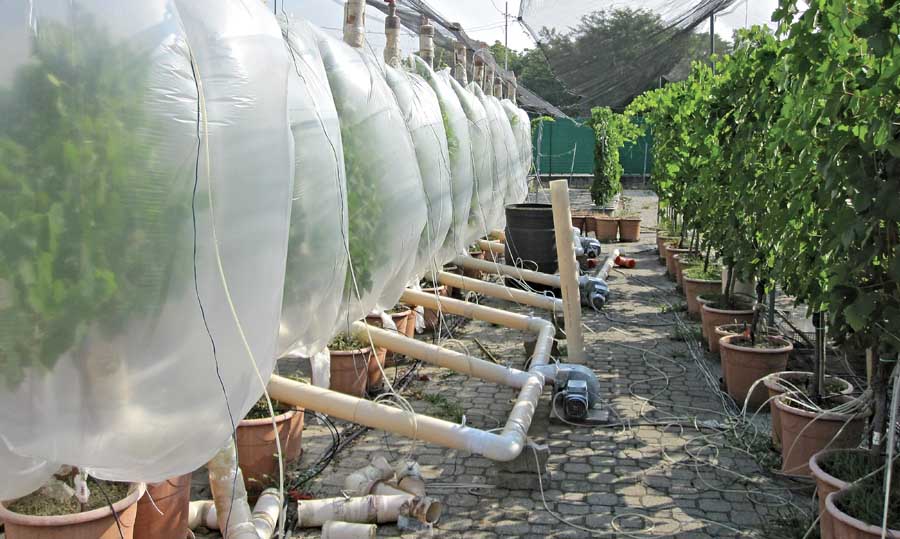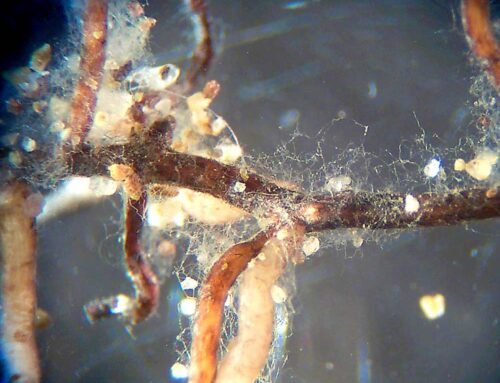
These Grenache grapes in the Rioja region of Spain show the effects of early leaf removal.
Recent wine trends in Italy have changed industry dynamics and made grower profitability all the more important, says Dr. Stefano Poni, director of the Institute of Fruit and Viticulture at the Sacred Heart Catholic University in Piacenza, Italy. According to Poni, in the last 25 years, Italian wine grape acreage has decreased by nearly 40 percent, from 2.4 million to 1.5 million acres, per capita wine consumption in Italy dropped from 24 to 10 gallons, and average farm size has doubled from 2.4 to 4.1 acres.
“Terroir is not enough anymore for us to stay competitive in the wine market,” he said to Pacific Northwest vintners and growers. “To be profitable, we need to reduce grower costs, remunerate growers for yields, and be environmentally sustainable.”
Poni, a speaker at the Washington Association of Wine Grape Growers’s annual meeting in February, shared results of his vine efficiency and canopy management research work that is changing the mindset of Italian growers. It’s no easy feat to persuade growers who are steeped in centuries-old tradition and culture to adopt mechanization.
“How do you convince growers who are used to doing everything by hand that mechanically pruned vines can be as efficient as their nice-looking, hand-pruned vines?” he asked.
Moving to mechanization
Mechanization starts with the trellis system, Poni said. “Italians are known for having a lot of fantasies—food, shoes, politicians—and also in our grapevine training systems. We have 43 different trellis systems in our textbooks, 12 that are popular. How can we think of vine mechanization if we have so many trellises?”
To address the mechanization issue, scientists had to come up with a new trellis system suitable for mechanical pruners, and other equipment. A new single, high-wire trellis was developed, featuring a spur-pruned cordon with a single wire 1.4 to 1.7 meters (54 to 70 inches) off the ground.
In addition to being suitable to mechanization, Poni said the new system has improved the cluster microclimate and canopy efficiency. Scientists used special plastic bags to envelop the vine, a technique used to measure the whole canopy gas exchange. They compared the new single high wire to the vertical shoot position trellis and found the VSP had a 26 percent lower photosynthetic rate.
“The reduction in photosynthesis was due to reduced light inside the canopy. With the VSP, we compressed the canopy between the catch wires too much,” he said, adding that the new high-wire system allows diffused light and sun flecks into the canopy. Summer temperatures in Italy have increased in recent years, and he believes the new trellis will be beneficial for both white and red varieties because it will provide sunburn protection, yet still allow enough light interception.

These plastic bags that envelope the entire vine are used to measure gas exchange of the canopy.
Mechanical pruning
Big labor savings can come from using mechanical pruners to remove wood above the cordon, but shoots need to be upright so machines can reach the wood. Cabernet Sauvignon grows naturally upright, Trebbiano grows downward, and Chardonnay is like “messy hair” that goes every which way, said Poni, who had to find a way to correct downward shoot behavior.
By mechanically shoot thinning early in the season—at prebloom stage—he was able to induce a more erect growth pattern.
Four years of data comparing hand pruning to mechanical pruning on the Croatina variety showed 25 percent higher yields from mechanically pruned vines, but no significant difference in fruit composition (Brix, anthocycanins, and phenolics). Data showed that 60 nodes per vine was the maximum threshold without decreasing fruit quality.
“If you tell a grower that he could crop 25 percent more with the same quality, that’s not as convincing as when you tell him that he can also reduce his pruning costs by 60 percent,” Poni said.
The Geneva double curtain trellis system, used in Italy since the 1970s, is well suited to mechanization, according to Poni. Italian growers using the Geneva double curtain can manage their vineyards in less than 60 hours of labor per hectare (25 hours per acre).
Leaf removal
Another research project aims to change cluster morphology. Poni found that he could achieve a looser cluster by removing the first five to six
primal or basal leaves before bloom.
“If you try it in the vineyard, you’ve got to be careful,” he said. “When you look at the vines, they look almost naked and you risk being chased around by the winemaker,” he said, jokingly. “But when you go back to the vineyard a couple of weeks later, it’s hard to see if you really did remove any leaves.”
In a trial in a Sangiovese vineyard, early leaf removal reduced fruit set and decreased berry weight, Poni reported, but Brix, color, and percent of relative skin weight increased. Further studies that involved enveloping the vines in bags for the season to measure gas exchange showed an increase in the net carbon exchange rate of the vines with leaves removed (3.31 micromoles per gram in the defoliated vines versus 2.43 in the control vines).
He explained that removing leaves early allows the vine time to recover during the season. “The vine works harder to compensate for the missing leaves.”
He tested four different leaf removal machines and found the best results (least amount of injury to inflorescence or baby grapes) were from machines that use air pressure to blow leaves off the vine.
Removing leaves late in the season can help slow down the ripening process. Preliminary work shows promising results from removing a few of the upper leaves late in the season at pre- or post-veraison.
“We can delay ripening without negatively affecting other fruit qualities,” Poni said. “In some very hot growing areas, grapes in mid-August have high enough sugars to make wines at 14 percent alcohol, but the berries don’t have the other good stuff, like color and phenols.” •
—by Melissa Hansen






Leave A Comment